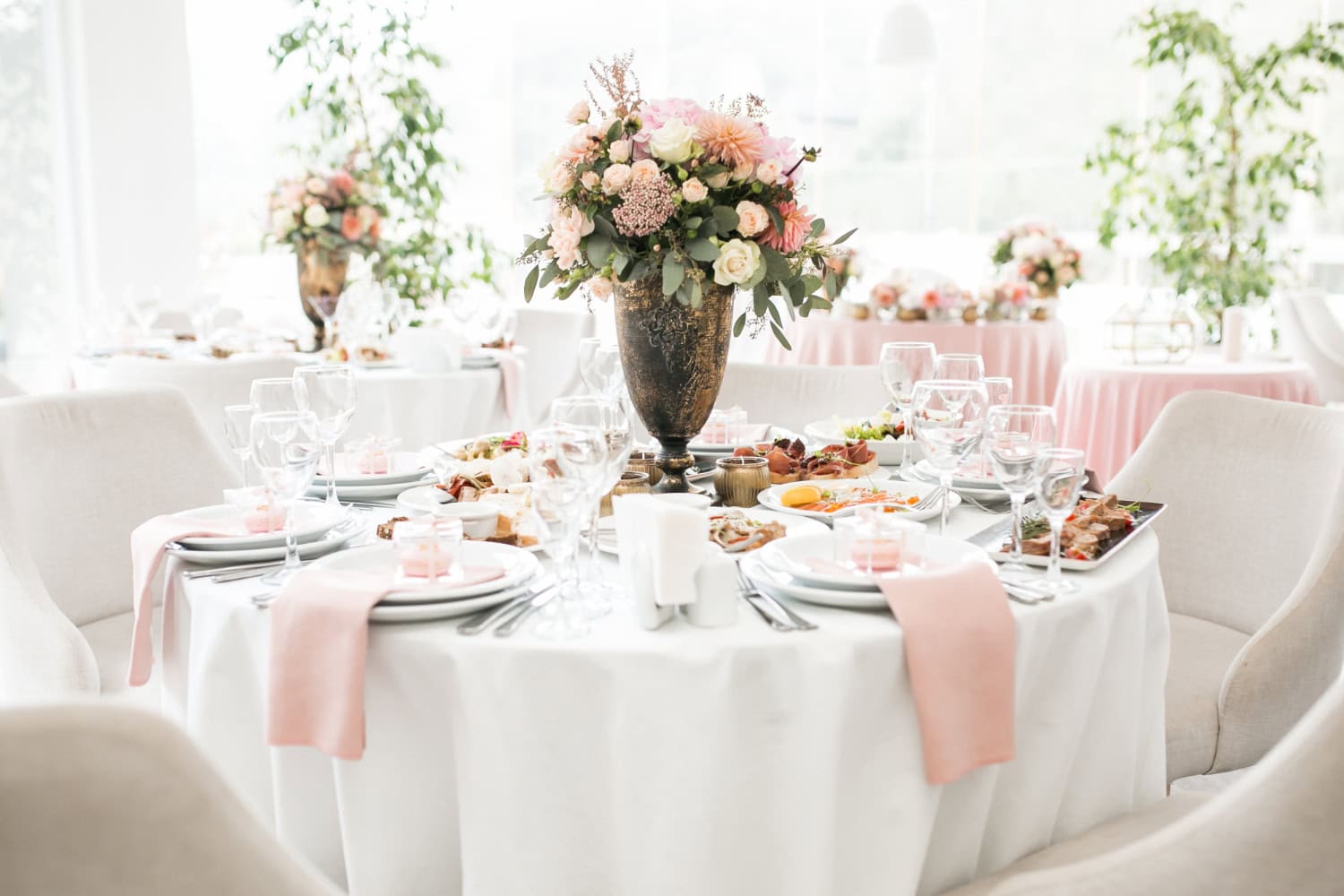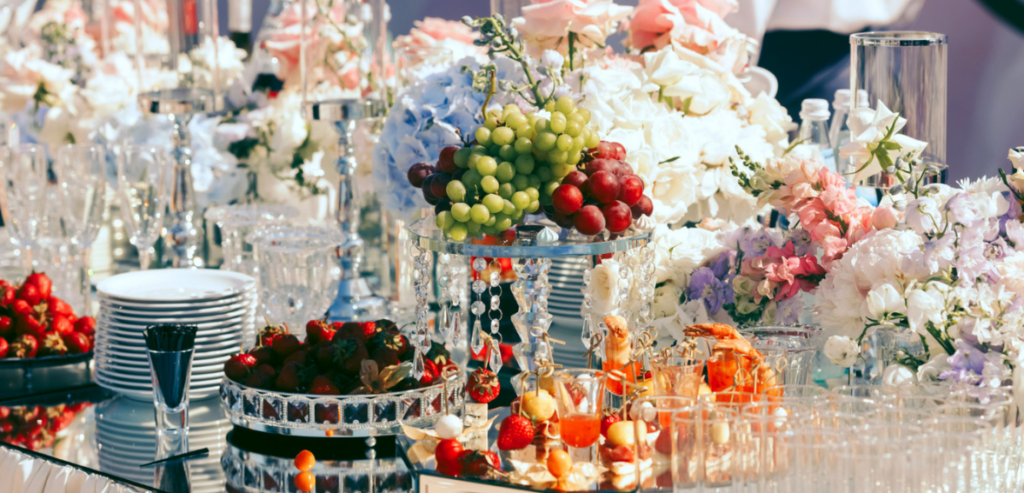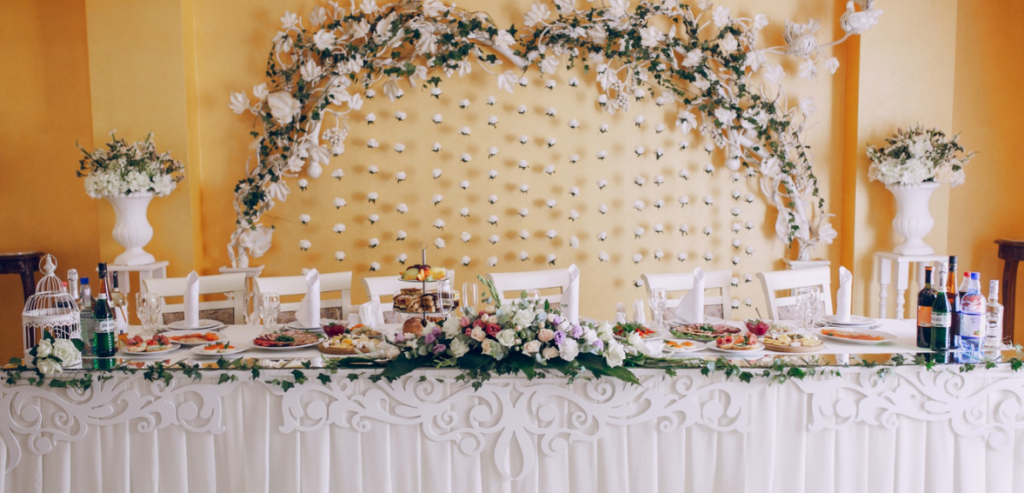
By Jermaine Thomas July 30, 2025
When planning any event, whether it’s a backyard party, small business showcase or community gathering, presentation is key. How a space looks and feels sets the tone for the experience. But you don’t have to break the bank to create a show-stopping setup. With a little creativity and planning you can get professional level style without the price tag. DIY decor and display hacks aren’t just about saving money. They’re about making your space feel intentional, personal and inviting. It’s about using simple materials, smart arrangements and thoughtful details to tell a story or showcase a product or service. For caterers, small event planners and DIY enthusiasts these techniques can elevate the whole atmosphere of the event.
Why Visual Presentation Matters
Presentation is often the first impression. Whether you’re styling a buffet, hosting a market stall or preparing a pop up shop, how your setup looks instantly communicates your level of care and professionalism. Even a small event can feel special when the space is styled well. People connect with visuals. A well laid table or curated display can invite guests to explore, stay longer and even engage more. This is especially true in food service where the catering table decor can influence perception before anyone even takes a bite.
You don’t need premium rentals or expensive decorations to create a beautiful setup. Many successful setups rely on resourcefulness. With the right approach everyday objects can be transformed into beautiful elements that bring charm and character to any event.
Planning Ahead with a Theme
The easiest way to avoid overspending is to start with a clear plan. Choosing a theme, color palette, or general style helps narrow down decisions and keeps your decor consistent. This doesn’t need to be elaborate. A simple theme like “rustic picnic” or “minimalist white” provides enough guidance for choosing materials and layouts.
Planning ahead also allows time to gather affordable supplies. This could mean visiting thrift stores, sourcing online bargains, or repurposing items from your home. Knowing your look in advance helps you stay focused and reduces the temptation to buy things you don’t need. For events involving food, the theme should also inform your catering table decor. A tropical theme might include palm leaves and citrus centerpieces, while a vintage theme could involve lace runners and mismatched dishes. This cohesion helps create a polished, memorable setting without extra cost.

Repurposing Everyday Items for DIY Decor
Some of the best DIY event styling ideas come from using what you already have. Old crates can become risers, mason jars can hold cutlery, and mirrors can be used as serving trays or signage backdrops. This not only saves money but also adds a personal touch to the decor.
Books, fabrics, and baskets can all be styled creatively. For example, stacking hardcover books can add height variation to a display. Scarves or fabric remnants make great table runners. Even an old ladder can be turned into a display stand with a little imagination. The goal is to look at each item for its shape, texture, and potential, not just its original function. Repurposing doesn’t mean looking shabby. With a bit of care, these reused pieces can give your event a curated, intentional feel while keeping it within your low-cost event presentation budget.
Affordable Centerpiece Ideas
Centerpieces are often the focal point of a table, and they don’t need to be grand to be effective. In fact, some of the most charming displays are the simplest. Fresh greenery, seasonal fruits, candles, or hand-painted bottles can create a beautiful centerpiece for just a few dollars.
You can also create visual interest by grouping objects of different heights and textures. Three mason jars filled with herbs and tied with ribbon can be just as impactful as a large floral arrangement. Likewise, bowls of citrus or pinecones add color and seasonal context without needing much work. Another trick is to use lighting as decor. Small LED string lights or battery-operated tea lights can add warmth and charm. Paired with natural materials like burlap, wood, or glass, these make a table look inviting without going over budget.
Creating Height and Layers
One of the keys to professional-looking catering table decor is creating visual layers. A flat table can feel bland, but when you vary the heights of dishes, signs, or decorative pieces, the setup becomes more dynamic. Use overturned bowls, boxes, or cake stands to lift certain items off the table. Wrap these risers in fabric or paper that matches your theme for a polished effect. If you’re displaying products, place key items at eye level to draw attention.
Layering also involves placing items in front of each other strategically. For example, a large floral arrangement in the back, serving dishes in the middle, and name cards or menus at the front can create depth. Even a small table can feel full and engaging when items are thoughtfully arranged in layers.
Inexpensive Signage and Labels
Signage is a small detail that can make a big impact. Labels help guide guests, explain menu items or add a personal touch to a display. You don’t need to order custom signs to achieve this. Printable templates, chalkboards or even hand drawn cards work beautifully. Use frames you already have or simple wooden stands to display signs in a neat and organized way. For outdoor or rustic themed events, write on natural materials like leaves, stones or slices of wood for a handcrafted feel that fits with DIY event styling.
Another idea is to use mini clipboards, photo holders or hanging strings with mini clothespins to hold labels or photos. These little touches not only look good but also keep the setup cohesive and informative.
Displaying Food
Food is often the star of the show. Even simple dishes can look amazing when displayed well. Using color contrast, unique serving pieces and smart layouts can turn a basic buffet into a visual feast. Try to group foods by color or texture for better flow. Use natural materials like wooden boards, banana leaves or parchment paper to line trays or platters. Tiered trays can make small desserts or appetizers pop.
Incorporating levels, as mentioned earlier, helps avoid a flat buffet look. Drinks can be displayed in beverage dispensers with tags. Ice buckets or chilled trays can be dressed up with herbs or citrus slices for a fresh look. Even with a tight budget, food presentation can reflect style and care. This is especially important for caterers or food entrepreneurs looking to impress guests or clients through their catering table decor choices.
Decorating with Nature
Nature provides an endless supply of free and beautiful materials. Branches, leaves, flowers, stones, and pinecones can all be used to add texture and character to your setup. These elements are especially useful for seasonal themes or outdoor events. Collecting greenery before the event and arranging it in simple jars or baskets makes for an affordable and eco-friendly decor option. Flowers from your own garden or a local market are cheaper than florist arrangements and can be arranged creatively in mismatched bottles or cups.
Driftwood, feathers, or dried flowers also work well in low-cost event presentation styles. You don’t need to overdo it, just a few natural accents placed strategically can soften the setup and make it feel more organic and welcoming.
Maximizing Space in Small Setups
When working with limited space, smart use of vertical displays and multipurpose items becomes even more important. A folding screen can become a backdrop. A pegboard can hold utensils, notes, or even small decor items. Wall hooks and tension rods can hold drapes or signage. Choosing a few strong visual elements, like a banner, fabric backdrop, or focal piece, helps tie a small space together. Mirrors or reflective surfaces can make a space feel larger, and clear containers create the illusion of openness.
Even in a tight area, you can achieve a high-impact presentation by focusing on symmetry, color coordination, and tidy arrangements. Less clutter and more thoughtful placement make even the simplest DIY event styling feel purposeful and refined.

Upcycling Materials for Custom Decor
Custom pieces often give events their unique personality. Instead of buying new, consider upcycling materials into decor. Old picture frames can become serving trays or signage holders. Tin cans painted in your color scheme become planters or utensil holders. Wine bottles can be turned into candleholders or vases. Fabric scraps can be sewn into bunting or tied around jars. Even used cardboard can be cut and painted into menu boards or table numbers.
Upcycling is not only budget-friendly, but it also adds character. It lets your creativity shine and creates an authentic, handmade look that’s perfect for low-cost event presentation.
Packing and Transport Tips
DIY events often involve hauling decor from one place to another. Smart packing helps avoid damage and makes setup smoother. Use plastic bins or crates with labeled compartments for easy access. Wrap breakables in cloth napkins or towels instead of bubble wrap to reduce waste and bulk. Keep an emergency kit with scissors, tape, safety pins, string, and a glue gun. This ensures that any last-minute fix is doable on-site. Stack and nest items to save space, and create a packing checklist based on your display plan to ensure you don’t forget any essentials.
Efficient packing also means efficient teardown. The faster you can clean up and transport your materials, the more energy you save at the end of the event. Thoughtful planning makes your DIY event styling truly stress-free from start to finish.
Creating a Signature Style
One of the most rewarding parts of DIY decor is the opportunity to build a signature style. Maybe it’s a certain color scheme, a preferred layout, or a quirky touch that guests start to associate with your events. This signature style helps with brand recognition if you’re doing this professionally. Even if it’s just for personal gatherings, consistency in style makes your events feel intentional and polished.
Document your setups with photos so you can refine your approach over time. Keep notes on what worked well and what you’d change next time. This not only builds confidence but also helps evolve your personal style while staying true to your catering table decor or presentation goals.
Conclusion
A beautiful event doesn’t need a big budget. With creativity, planning, and DIY touches, you can craft memorable presentations using what you already have. Thoughtful decor, lighting, and repurposed materials add personality and charm. A low-cost, hands-on approach brings heart and originality that guests will truly appreciate and remember.